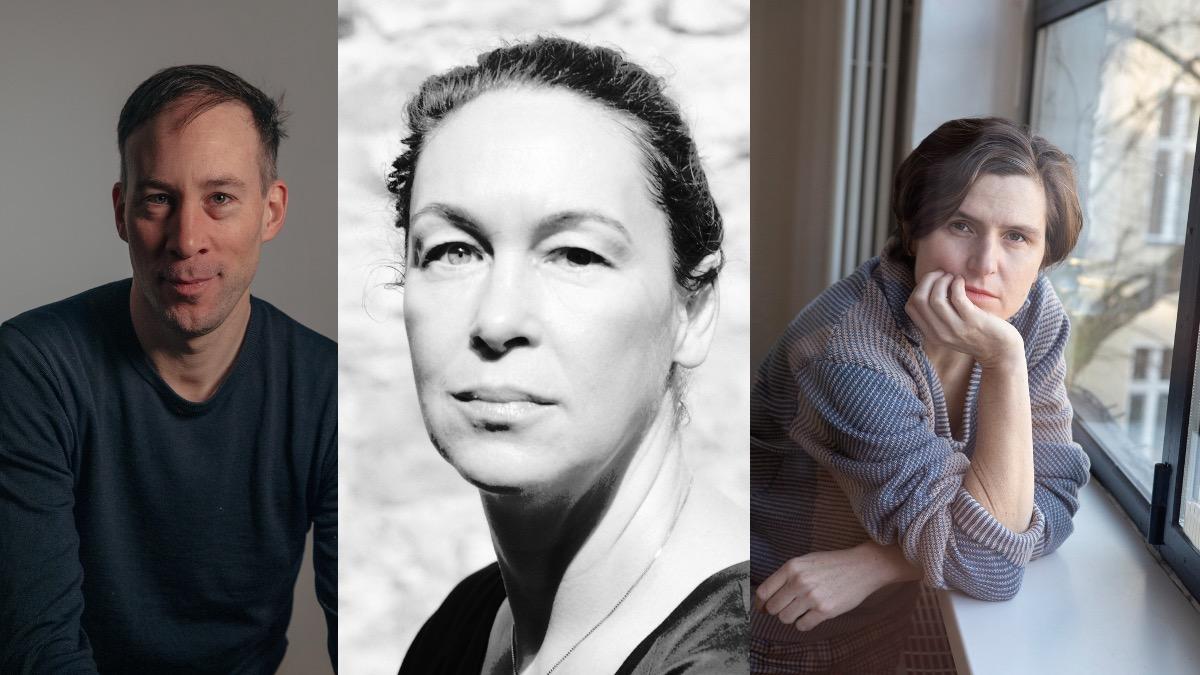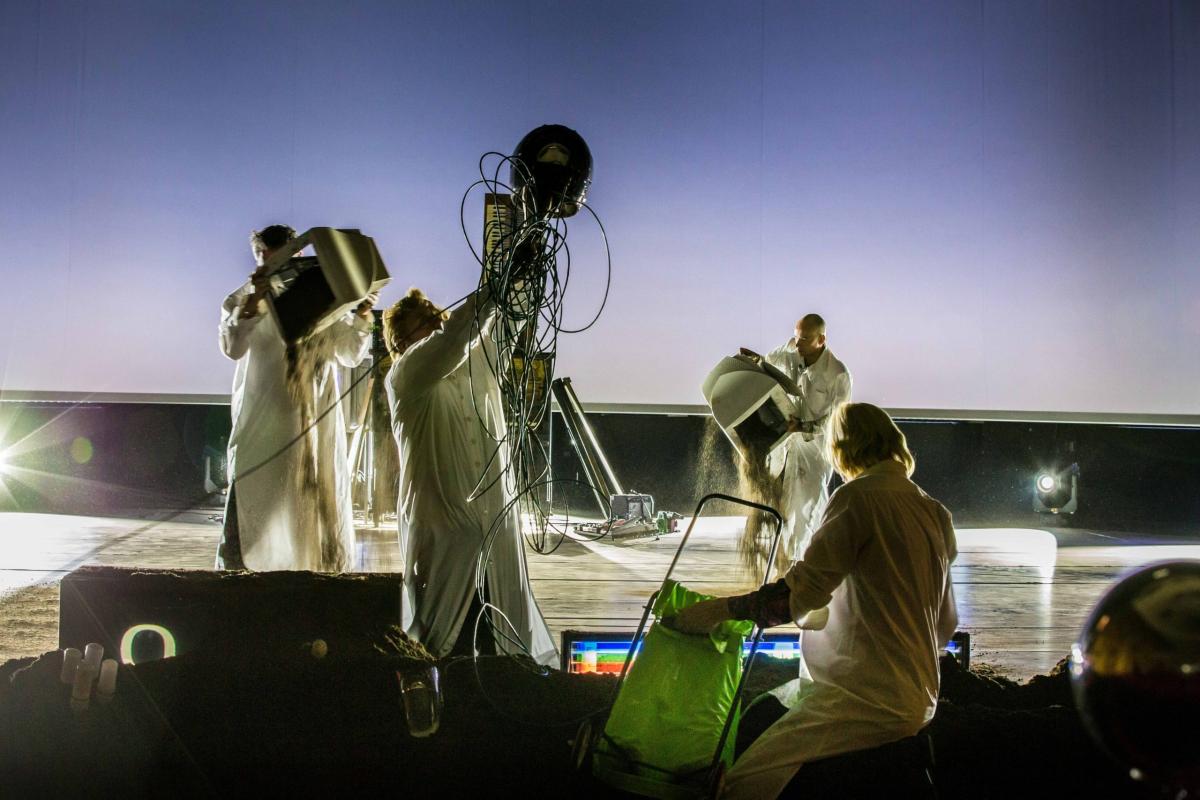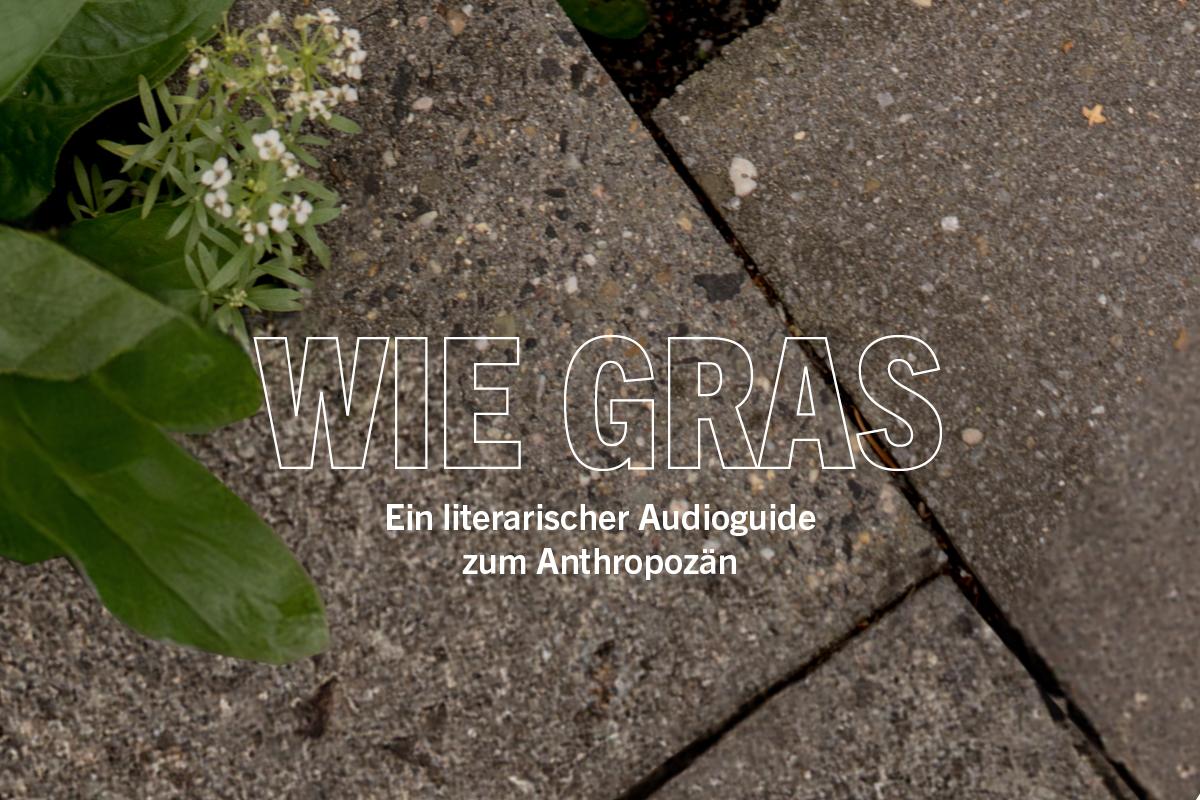What would a museum of the Anthropocene look like? What kind of stories would it tell about the so-called age of humans? And will everything be like grass at some point? The Museum für Naturkunde Berlin's literary audio guide with texts by Daniel Falb, Monika Rinck and Judith Schalansky, spoken by Sandra Hüller, Dirk von Lowtzow and Christoph Müller, invites you to explore the exhibition in a completely new way.
Please note that the audioguide is available in German only.
Neozoa, algae, polymers: human activities are profoundly changing the planet. Their traces can be found in the sedimentary layers of the earth and they have produced plenty of new creatures and objects. In the so-called "age of humans", the Anthropocene, the societies of the Global North in particular are producing a gigantic mass of things, breeding their own animal and plant species and excessively exploiting natural resources. The term Anthropocene stands for the fact that the increasingly catastrophic consequences of human influence on the Earth system are entering social and political consciousness. If we look at nature and natural objects with this changed awareness, we can see behind them the many stories that tell of the long-lasting and changing relationship between the environment, human use of resources and technologies. There is no better place to do this than in a natural history museum.
Three renowned writers, Daniel Falb, Monika Rinck and Judith Schalansky, explore these stories and connections based on their observations of the rooms and objects of the Museum für Naturkunde Berlin. From different points of view, the literary texts of the three authors are dedicated to the interactions between the human and the non-human: sometimes critical, sometimes playful, sometimes narrative. In doing so, they rattle closed doors, come across fire extinguishers, heating pipes and the otherwise often overlooked background against which the exhibition objects are presented. They invite visitors to engage in thought experiments beyond the human and provide a glimpse into the "deep future" of human societies in the Anthropocene.
Spoken by Oscar-nominated actress Sandra Hüller, Christoph Müller (Schauspiel Leipzig) and Tocotronic singer Dirk von Lowtzow, and combined into a theatrical composition by the FARN Kollektiv, an immersive sound installation has been created. Accompanied by music and sound as a fourth voice, the audio guide invites to stroll through the exhibition and experience the objects on display in a completely new way: Listening to the rustling of the radiators, the chorus of taxidermied animals, the stories behind the rocks. In view of the profound changes to the earth system caused by human activity, what do we want to take with us into the future?
A production of the FARN Kollektiv and the Museum für Naturkunde Berlin
Audible from 10 April 2024 at the Museum für Naturkunde Berlin.
Our tip: We recommend bringing headphones with in-ear technology and a noise-canceling function.
Listen in full
Introduction
Audioguide
Authors
Daniel Falb is a poet and philosopher. He lives and works in Berlin, where he studied philosophy and completed his doctorate with a thesis on the concept of collectivity. He has published five volumes of poetry issued by kookbooks, most recently Deutschland. Ein Weltmärchen (in leichter Sprache) (2023). In addition to poetry, Falb also works on geophilosophy, the theory of the Anthropocene and questions of poetics and art theory. In 2015 he published Anthropozän. Dichtung in der Gegenwartsgeologie (Verlagshaus Berlin 2015) followed by the essay Geospekulationen. Metaphysiken für die Erde im Anthropozän (Merve) in 2019.
Monika Rinck was born in Zweibrücken in 1969. She studied religious studies, history and comparative linguistics at the University of Bochum, Berlin’s Free University, and Yale University. In artistic terms, she works in the most varied areas, having already developed a penchant for interdisciplinarity and transmedia border-crossing during her studies. Rinck is a poet and essayist, a member of the action group "Das Lemma", and an actress in the fictional docu-soap "Le Pingpong d’Amour". She is also the author of begriffsstudio, a work-in-progress on the Internet (a first selection of texts was published in book form in 2001) that "archives and probes the linguistic lapses, intellectual epiphanies, strange and notable word constructions that emerge in the everyday life of the media," as the literary critic Michael Braun put it. Around these fragments, a fresh, hybrid store of texts results, somewhere between a poetic diary and a lexicon of the present. (Alexander Gumz)
Judith Schalansky, born in Greifswald in 1980, studied art history and communication design. Her work, including the internationally bestselling book Atlas of remote Islands (2009), her coming-of-age novel The Giraffe's Neck 2011) and An Inventory of Losses (2018), has been translated into more than 25 languages and has received numerous awards. She is the editor of the series of books 'Naturkunden' and 'Wildes Wissen' published by Matthes & Seitz Berlin and lives as a freelance writer and book designer in Berlin.

Production
Founded in 2016, the theatre collective FARN Kollektiv consists of Sandra Hüller, Tom Schneider, Tobias Staab, Michael Graessner, Sandro Tajouri and Moritz Bossmann.
For them, theater consists in a collective practice of thinking and acting. Within the collective, there are no fixed structures or hierarchies, no pre-existing forms or aesthetics, no certainties and no truth that one could or wanted to rely on. Their production "The Shape of Trouble to Come. A Posthuman Ritual" at Schauspiel Leipzig in 2021 was dedicated to utopian narratives of a possible tomorrow, based on texts by Donna Haraway and other authors in which humans and capitalism are moved from the center of thought. Following on from this, the FARN Kollective developed a performance on the Anthropocene in the exhibition halls of the Museum für Naturkunde in 2022.

References
- Philip Ball: "The earth moves most for humans. Agriculture and excavations shape the landscape more than rivers and glaciers", in: Nature (2005), https://doi.org/10.1038/news050307-2.
- Emily Elhacham, L. Ben-Uri, J. Grozovski, et al. "Global human-made mass exceeds all living biomass", in: Nature 588 (2020), S. 442–444, https://doi.org/10.1038/s41586-020-3010-5.
- Food and Agriculture Organization of the United Nations: "What is happening to Agrobiodiversity?", 2004, https://www.fao.org/3/y5609e/y5609e02.htm.
- Darren Incorvaia. "These 8 GMOs tell a brief history of genetic modification". In: Science News, 23.10.2023, https://www.sciencenews.org/article/8-gmo-history-genetic-modification.
- Christoph Rosol, Benjamin Steininger, Jürgen Renn und Robert Schlögl, "Vom Computerzeitalter in der Epoche des Menschen", 30. November 2018, https://www.mpg.de/12545963/geo-anthropologie-digitale-transformation.
- John Maynard Smith und Eörs Szathmáry, Evolution: Prozesse, Mechanismen, Modelle, Spektrum Evolution, Heidelberg Berlin Oxford: Spektrum, Akad. Verl, 1996, S. 318.
- Robert Smithson und Jack Flam, Robert Smithson, the Collected Writings. Nachdr. The Documents of Twentieth Century Art. Berkeley: University of California Press, 2000, S. 101 u. 104.
- Will Steffen, Wendy Broadgate, Lisa Deutsch, Owen Gaffney und Cornelia Ludwig, "The Trajectory of the Anthropocene: The Great Acceleration", in: The Anthropocene Review 2 (1) 2015, S. 81–98, https://doi.org/10.1177/2053019614564785.
- Aubrey Streit Krug, Emily B. M. Drummond, David L. Van Tassel, Emily J. Warschefsky: "The next era of crop domestication starts now", in: Agricultural Sciences 120 (14) e2205769120, 2023 https://doi.org/10.1073/pnas.2205769120.
